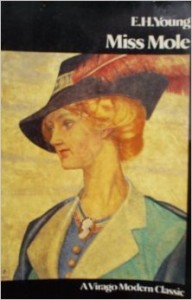 I was on the road for most of September. That photo’s taken in the elevator of the Flatiron Building while I was in NYC, but other places I stayed included Dallas, Texas and Pocatello, Idaho. (More on that to come!) Here’s what I read in September, according to my notes, which always seem to leave out some stuff. Bolded indicates a particularly notable read.
I was on the road for most of September. That photo’s taken in the elevator of the Flatiron Building while I was in NYC, but other places I stayed included Dallas, Texas and Pocatello, Idaho. (More on that to come!) Here’s what I read in September, according to my notes, which always seem to leave out some stuff. Bolded indicates a particularly notable read.
Alex P. Berg. Red Hot Steele.
Jillian Blake. Antisocial.
Ramsey Campbell. The Parasite.
Jessica Cluess A Shadow Bright and Burning.
George Alec Effinger. Heroics.
Justin Evans. The White Devil.
Rumer Godden. Black Narcissus. Interesting because I’d been thinking about omniscient POV, which this book uses.
Joe Hill. The Fireman.
Tami Hoag. Cold Cold Heart,
Aaron James. Assholes* A Theory. Some useful stuff on dealing with bad-faith actors.
Stephen King and Owen King. Gwendy’s Button Box.
Stephen King. End of Watch.
Mur Lafferty. Six Wakes.
Carrie Ann Noble. The Gold Son.
Dan Padavona. Crawlspace.
Sarah Porter. Vassa in the Night.
Susan Kaye Quinn. Third Daughter. Enjoyable steampunk romance with an Indian-flavored milieu.
Ron Ripley. Berkley Street.
Jon Ronson. So You’ve Been Publicly Shamed. Fascinating read about social media and publicity gone awry.
Sherwood Smith. Inda, The Fox, King’s Shield, and Treason’s Shore.
Wendy Corsi Staub. Lullaby and Good Night.
Steven Rasnic Tem. Deadfall Hotel.
I’ve been watching DC’s Legends and am halfway through Season 2 so far.







